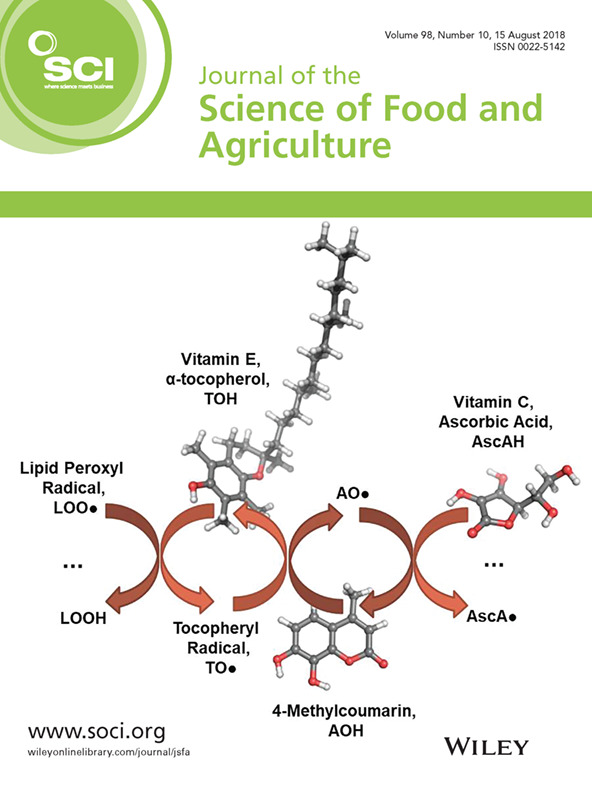Ver ítem
- xmlui.general.dspace_homeCentros Regionales y EEAsCentro Regional Buenos Aires NorteEEA San PedroArtículos científicosxmlui.ArtifactBrowser.ItemViewer.trail
- Inicio
- Centros Regionales y EEAs
- Centro Regional Buenos Aires Norte
- EEA San Pedro
- Artículos científicos
- Ver ítem
Fruit flesh volatile and carotenoid profile analysis within the Cucumis melo L. species reveals unexploited variability for future genetic breeding
Resumen
Aroma profile and carotenoids content of melon flesh are two important aspects influencing the quality of this fruit that have been characterized using only selected genotypes. However, the extant variability of the whole species remains unknown.A complete view of the volatile/carotenoid profiles of melon flesh was obtained analyzing 71 accessions, representing the whole diversity of the species. Gas chromatography–mass spectrometry and high‐performance
[ver mas...]
Aroma profile and carotenoids content of melon flesh are two important aspects influencing the quality of this fruit that have been characterized using only selected genotypes. However, the extant variability of the whole species remains unknown.A complete view of the volatile/carotenoid profiles of melon flesh was obtained analyzing 71 accessions, representing the whole diversity of the species. Gas chromatography–mass spectrometry and high‐performance liquid chromatography were used to analyze 200 volatile compounds and five carotenoids. Genotypes were classified into two main clusters (high/low aroma), but with a large diversity of differential profiles within each cluster, consistent with the ripening behavior, flesh color and proposed evolutionary and breeding history of the different horticultural groups. Our results highlight the huge amount of untapped aroma diversity of melon germplasm, especially of non‐commercial types. Also, landraces with high nutritional value with regard to carotenoids have been identified. All this knowledge will encourage melon breeding, facilitating the selection of the genetic resources more appropriate to develop cultivars with new aromatic profiles or to minimize the impact of breeding on melon quality. The newly characterized sources provide the basis for further investigations into specific genes/alleles contributing to melon flesh quality.
[Cerrar]

Autor
Esteras, Cristina;
Rambla, José Luis;
Sanchez, Gerardo;
López-Gresa, María Pilar;
González-Mas, María del Carmen;
Fernández-Trujillo, Juan Pablo;
Bellés, José María;
Granell, Antonio;
Picó, María Belén;
Fuente
Journal of the Science of Food and Agriculture, 98 (10) : 3915-3925 (August 2018)
Fecha
2018-08
ISSN
0022-5142
1097-0010
1097-0010
Formato
pdf
Tipo de documento
artículo
Palabras Claves
Derechos de acceso
Restringido
 Excepto donde se diga explicitamente, este item se publica bajo la siguiente descripción: Creative Commons Attribution-NonCommercial-ShareAlike 2.5 Unported (CC BY-NC-SA 2.5)
Excepto donde se diga explicitamente, este item se publica bajo la siguiente descripción: Creative Commons Attribution-NonCommercial-ShareAlike 2.5 Unported (CC BY-NC-SA 2.5)

